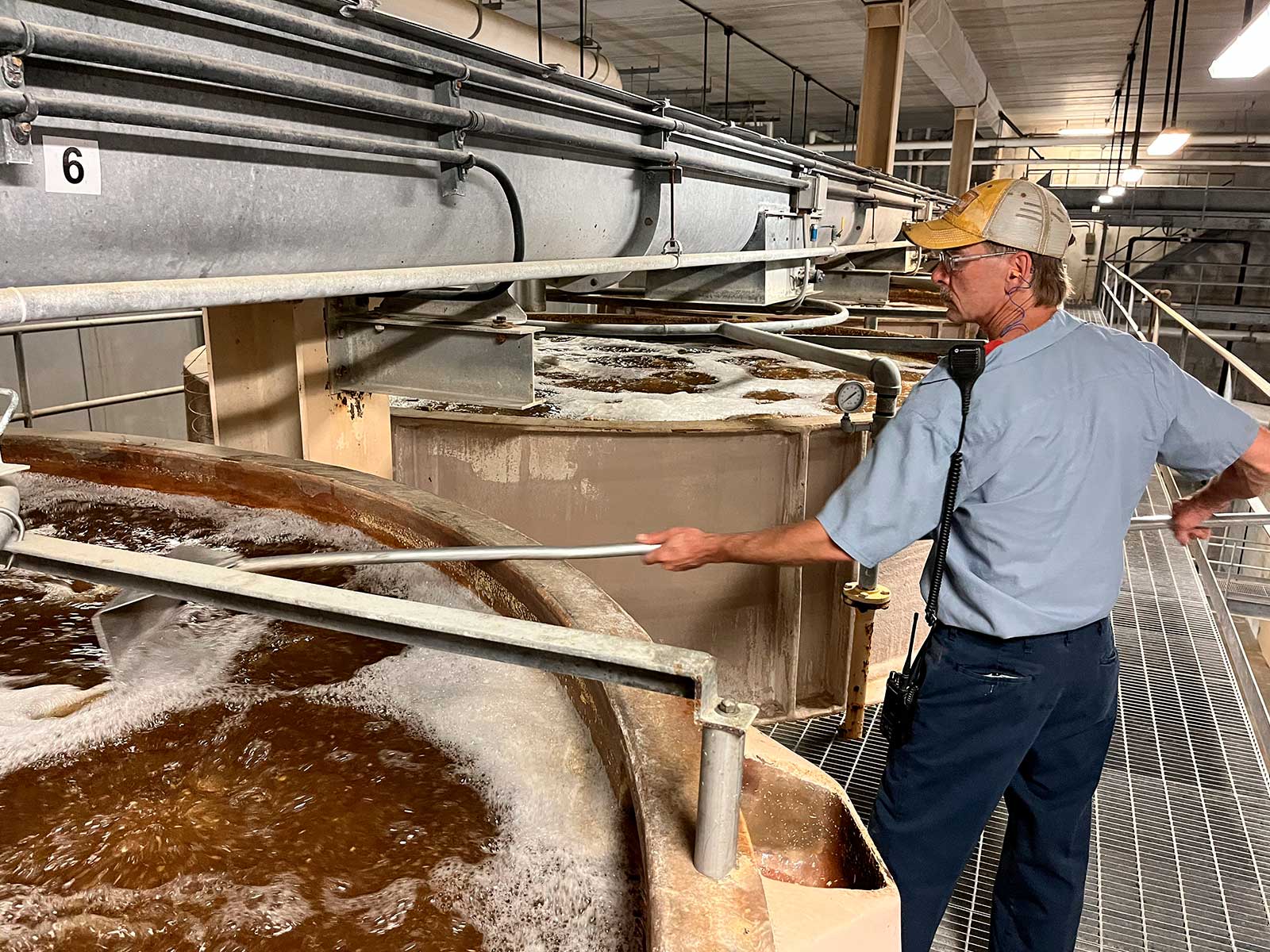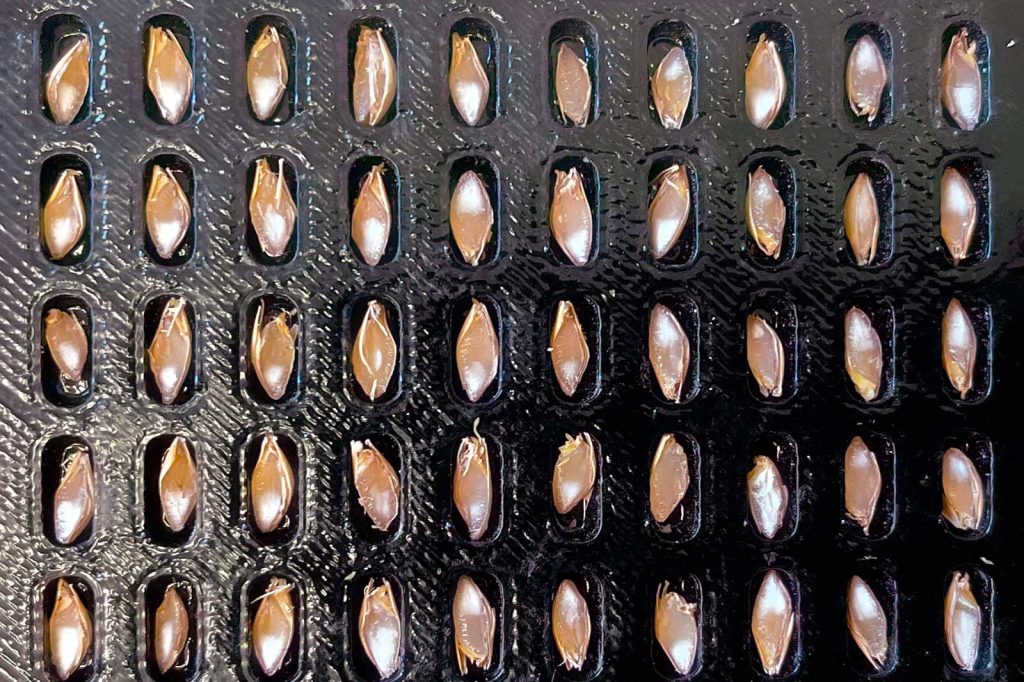
Malting at its core is a very simple process. Just like when the character Derek Zoolander, starring Ben Stiller, from the hit 2001 movie “Zoolander” once said, “Moisture is the essence of wetness” – simple! Adding water to the barley in the steep tank begins the sprouting process, maintaining proper moisture through germination, removing that moisture on the kiln, further creating a wide array of colors and flavors. The malting process, much like the rest of life on earth, is dependent on water. Our malting operation in Manitowoc is located near the shore of Lake Michigan, part of the Great Lakes chain that is home to more than 20% of the world’s freshwater, comprising Lakes Superior, Michigan, Huron, Erie, and Ontario. While availability and high quality are essential requirements of water in malting, the real challenge is getting the water where it needs to be in the kernel.
Time, temperature, and moisture are the critical controls maltsters use for creating the wide variety of specialty malts that exist. Today, like every day, our focus is on moisture, which could otherwise be called water content. In process, most maltsters measure and record the average moisture content for each batch, multiple times during each step of the process. The tools for this measurement are simple, a grain probe for sampling, a bucket or jar for collection, an analytical balance, and an oven. There are some additional tools that are commonly used to give more rapid results, such as a moisture analyzer or near-infrared (NIR) analyzer. At Briess, we use a combination of these tools to assess moisture at different stages of the process.
While moisture content is the most commonly measured value during the malting process, it does not always tell the entire story. While it provides a rapid, average value, it will not tell you if the moisture is evenly distributed and, more importantly, it will not tell you if the moisture has not reached the distal end of the kernel. To evenly and completely modify barley during malting, water must be spread throughout the entire kernel because water provides the means by which growth and modification of the grain occur. Hormones that trigger essential processes and enzymes that catalyze essential reactions, all require water to move through the kernel. In addition, water is used during numerous hydrolytic reactions that occur during malting. To ensure that the water is where it needs to be, we conduct hydration testing (Chapon Test). During this process, we take a sample for the process step in question, boil a small sample, and then painstakingly cut the kernels in half to assess the level of gelatinized starch. Gelatinized starch will appear clear and soft, while dry starch will remain white and feel chalky. Starch cannot gelatinize in a dry state, so this test actually gives insight into whether or not moisture should be added during the malting process.
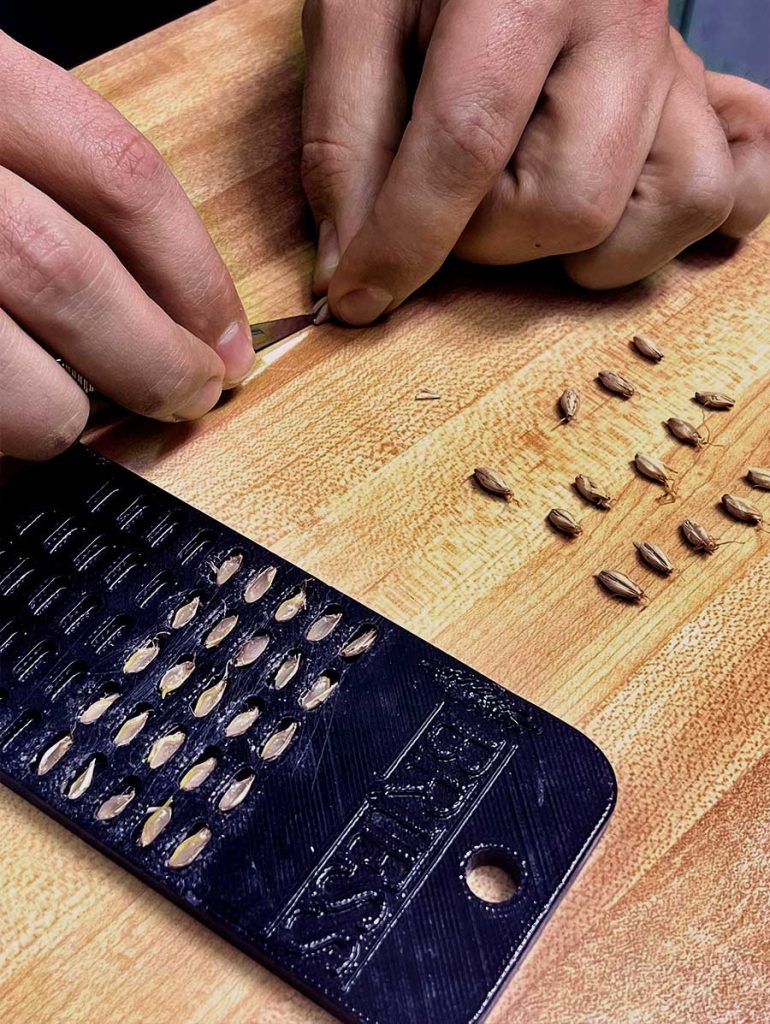
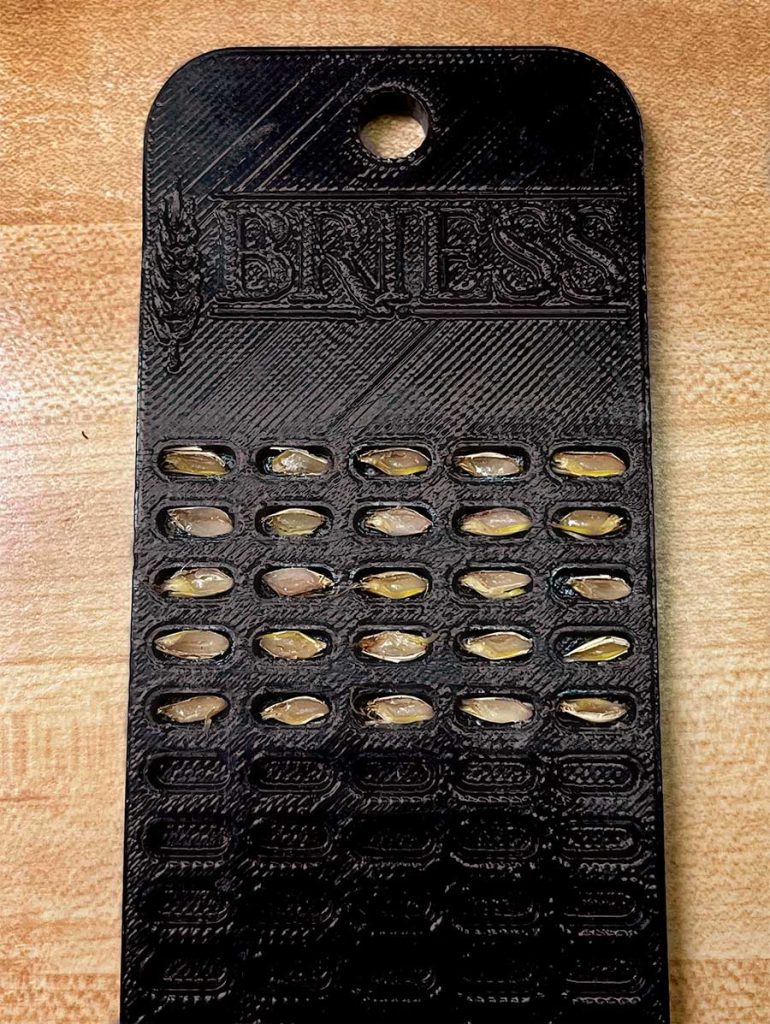
Early in germination – showing full hydration.
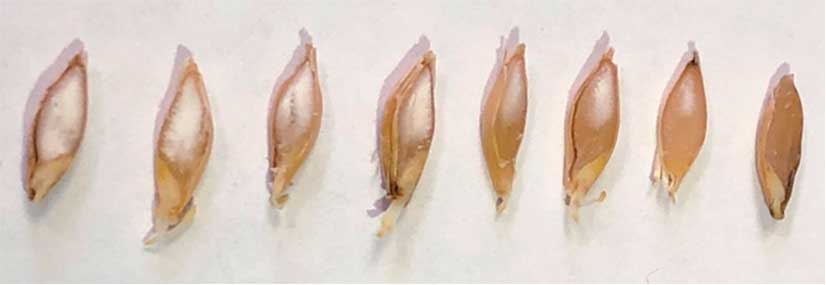
After 1st immersion (left) – very little hydration
Early germination (right) – fully hydrated.
By design, malting recipes are intended to achieve a specific moisture content that has been proven to achieve the desired level of hydration at the appropriate step of the malting process. While the moisture will be assessed numerous times throughout the process, hydration testing will only be conducted a minimal number of times to ensure the accuracy and success of the recipe and process adjustments. Hydration and moisture targets will vary between specialty malt products, barley varieties, crop year, protein content, and potentially with the time of the year. Because of this high-level variation, targets are established early in a crop year, and then constantly assessed throughout the year. Much like your doctor, the maltster recommends proper and consistent hydration to ensure healthy growth and success.

